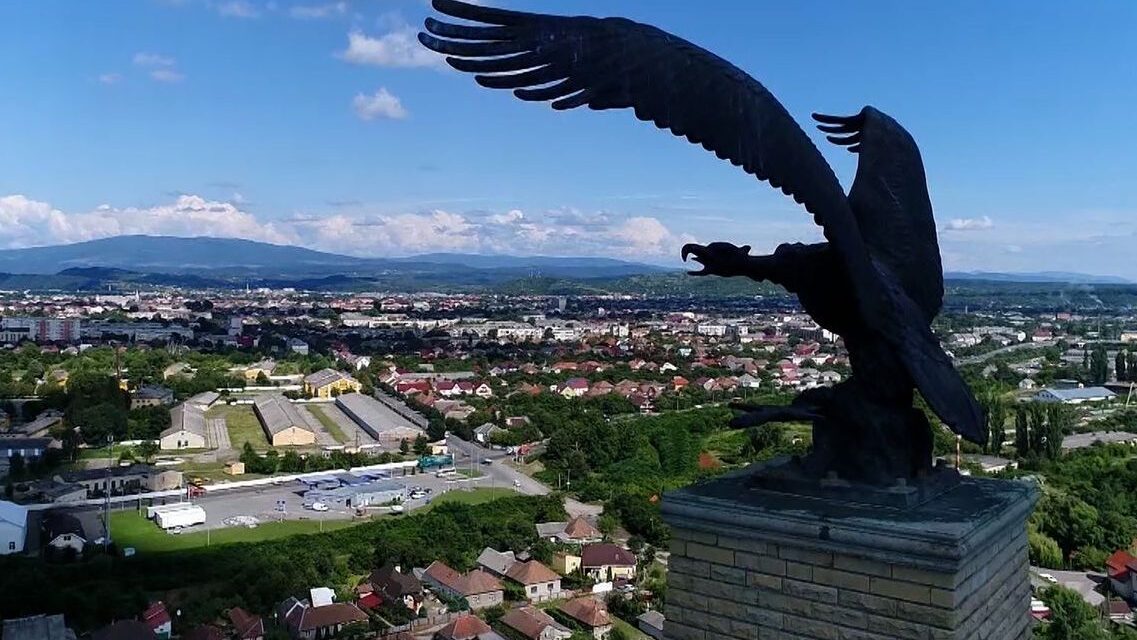We Hungarians have never had a question as to whether we belong to Europe. According to the myth, the turul bird, the giant bird of the endless steppes, led us here.
We Hungarians have never had a question as to whether we belong to Europe. According to the myth, the turul bird, the giant bird of the endless steppes, led us here. The Hungarians followed him, where the bird disappeared from their sight, they camped there, when the turul appeared again, the Hungarians also gathered around. This is how they reached the geographical center of Europe, the Carpathian basin, the land of Attila, because according to the myth, the great Hun king left his former kingdom to his Hungarian brothers. This is how the Hungarians claimed their homeland on the border between East and West. This is how they became Western Christians and how they remained freedom-loving Eastern nomads.
Whether the occupying Hungarians knew this or not, they stayed here, because the bird did not fly from here. It didn't fly any further, because the mythical turul is actually a peregrine falcon and its westernmost natural habitat is precisely the Carpathian Basin. The peregrine falcon, originating from the world of the eastern steppes, became the mythical bird of Hungarian origin tales under the name turul of Old Turkish origin, but it is also a griffon bird capable of miracles in the world of folk tales.
The turul bird had a role not only in the conquest of the country, but also in the designation and protection of the Hungarian royal family. The bird of the steppes is also in the legend of the origin of the Árpád House, the Hungarian dynasty that ruled from the conquest until 1301. Born in the year 819, the mother of leader Álmos, Emese, had a divine dream during her pregnancy, a turul-shaped bird landed on her to protect the unborn child from harm and take care of him. According to dream interpreters and the Christian passers-by of the myth, the dream meant not only protection, but also that a spring flows from the womb of Emese (meaning mother, ancestor) and that glorious kings are born from her loins. We can already read about this in the historiography of Anonymus at the end of the 12th century, and later famous chroniclers also confirmed the myth.
The crowned turul was the military insignia of the Hungarians until the founding of the state, then Christian symbols pushed it somewhat into the background. However, the Turul myth lived on and came to the fore again on the thousand-year anniversary of the conquest. In 1896, seven millennium monuments were erected at seven symbolic points of the country "with the aim of perpetuating the thousand-year statehood with lasting memories". The country's four gates, Dévény in the west, where the Danube enters the country, Brasso in Transylvania, Zimony in the southeast, overlooking Száva, the gate in the South, and Munkács in the Subcarpathians, the eastern gate, were chosen, but Nyitra, Pannonhalma also received a memorial and also Pusztaszer. Each memorial site was of historical importance, they were meant to symbolize the thousand-year history and territorial unity of Hungarians in the Carpathian Basin. The thousand-year-old monuments along the borders looked towards the "neighbors", as if to indicate that the Hungarians were protecting the country left to them by their ancestors. How powerful this symbol was is shown by the fact that at the end of the First World War the vassal states destroyed them as soon as they could. Of particular interest is the fate of the turul erected in Munkács Castle in Subcarpathia, which proclaimed the thousand-year European past of Hungarians on top of a 33-meter-high obelisk. It was first taken down by the Czechoslovakians in 1924, and then by the Russians in 1945, who melted down most of the giant bronze bird lying in storage for the five-pointed star of their own "liberation" monument. In 2008, when the atmosphere became a little more free, the Hungarians raised the symbolic monument again as a donation, which was then torn down again by the Ukrainians in October 2022 without any prior notice.
It is difficult for people to understand the hatred and violence that the peoples living in the territory of the country or in its neighborhood feel towards the Hungarians, have committed and are still committing today. After all, the first Árpád king, the founder of the state, Szent István, paid special attention to the treatment of foreigners in his admonitions written to his son. "A country with one language and one custom is weak and fallible. Therefore, I command you, my son, to protect and cherish the newcomers with good will, so that they prefer to stay with you rather than live elsewhere." István's successors ruled in this spirit, and the Hungarian citizens lived according to this. Over the centuries, they welcomed foreigners with a good heart, Germans who moved here from famine in the hope of a better life, Kuns fleeing from the Tatars, Serbs, Romanians fleeing from the Turks, and Slovaks and Ruthenians who came down from the mountains. ARC. Béla's (1235–1270) letter of privilege placed Hungarian Jewry under royal protection for centuries. At first, the accepted people were grateful that they had received a new homeland from the Hungarians.
Due to the geopolitical position and wealth of the medieval Kingdom of Hungary, it was the language of balance in Europe between the German-Roman Empire and the Byzantine Empire. The Árpád kings and the Anjou kings who followed them were aware of their political weight, they entwined the whole of Europe with their diplomatic and family relations, and this ensured peace and prosperity for the country. The Islamic conquest put an end to all that. After five hundred glorious years, the hellish journey of the Hungarians began, one hundred and fifty years of Turkish subjugation, a country torn into three parts, lost freedom and an eternal struggle for independence against being assimilated into the Habsburg Empire. The West only showed interest in Hungary when its momentary interest so desired. During the struggles of the centuries, Hungarians became a minority in their own country, to which the previous acceptance and the conscious resettlement policy of the Habsburgs greatly contributed. The country was on the losing side in two world wars, Trianon, the mutilated homeland, the Soviet occupation and the mass flight from it, desertion marked the next five hundred years.
The coming five hundred years can awaken new hopes in us. During his visit to Budapest last year, Pope Francis spoke about the mission of Hungarians. Hungary occupies a central place in the history of Europe, said the Holy Father. The documents of the Vatican archives prove that this country was a bastion of Christianity for centuries, and it must be so now, in today's troubled times, in a Europe divided by ideologies and global interests, Hungary has a role as a bridge builder. Because in this country, different religions and peoples live together without contradictions and work respectfully in a common constructive spirit. Europe also needs the different nations to form a family, one in which their growth and uniqueness are preserved.
The mission of Hungarians today is to preserve and realize the treasure of democracy and the dream of peace. Because the Hungarians know the value of freedom, since they had to pay a high price for it, Pope Francis said. We really know how much! That's why our concept of freedom, our values about the national community, our European loneliness are different, and that's why our difference is striking.
In 2024, the peregrine falcon, our turul, became the bird of the year and the bird ambassador of Hungary. I feel something symbolic in this, I am waiting for the Hungarian myth to revive and mix with everything that is very relevant today. Let Europe return to its Christian roots, find its true place, create peace in the world, and let us Hungarians play an important role in this!
The author is a historian
Source: Magyar Hírlap
Front page image: Guardian-protector Turul on the castle's edge/Source: MN/Tamás Bereczi













